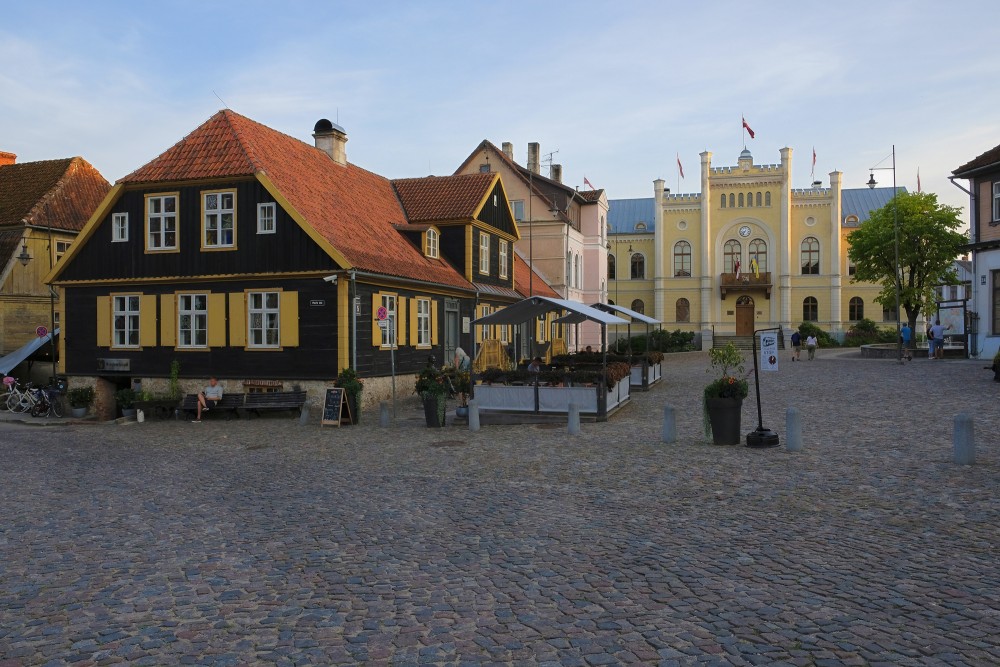UNESCO sites in Latvia are more than historical monuments—they represent the nation’s identity and global significance. While many tourists visit Old Riga, few realize Latvia offers several other UNESCO-inscribed and tentative heritage sites. These include scientific landmarks, preserved medieval towns, ancient fortresses, and spiritual communities. Each site reflects the country’s unique position in Europe’s cultural and natural landscape. Exploring these destinations helps protect them for future generations. Let’s uncover the lesser-known UNESCO sites in Latvia and understand their importance.
Old Riga: The Iconic UNESCO Site in Latvia
Old Riga is the first and most famous of all UNESCO sites in Latvia. It was inscribed in 1997 and remains the heart of Latvia’s capital city. This well-preserved medieval center reflects centuries of trade, religion, and art. Walking through the cobblestone streets feels like stepping into the past.
You’ll find stunning buildings from the Gothic, Romanesque, Baroque, and Art Nouveau periods. Landmarks like Riga Cathedral, St. Peter’s Church, and the House of the Blackheads stand out. The city once played a vital role in the Hanseatic League, a powerful trade alliance. Each building tells a story of wealth, faith, or craftsmanship.
Despite modernization, Old Riga maintains its historic structure and cultural spirit. Restaurants and galleries now fill medieval merchant homes, blending the old and new. The town center regularly hosts festivals, art fairs, and cultural events. Old Riga is not just Latvia’s most visited site—it is a national symbol.
Why Old Riga Stands Out:
-
Gothic, Baroque, and Romanesque architectural styles
-
Central role in Hanseatic League history
-
Vibrant mix of old-world charm and modern life
-
Cultural events and open-air performances
-
Easily walkable and full of photo opportunities
Struve Geodetic Arc: Scientific Legacy Across Borders
The Struve Geodetic Arc is one of the most unique UNESCO sites in Latvia. This extraordinary scientific project helped determine the Earth’s size and shape in the 19th century. Latvian astronomers and scientists worked alongside colleagues across Europe to complete this monumental task.
The arc spans over 2,800 kilometers, running through ten countries from Norway to Ukraine. Latvia hosts several preserved triangulation points used during the project. These include sites in Jēkabpils, Sestukalns, and Ziestu Hill. They stand as reminders of Latvia’s scientific legacy and global cooperation.
Unlike most UNESCO sites, this one celebrates science instead of architecture. It showcases early geodetic precision and how nations worked together without modern technology. Latvia’s role in this massive project proves its long-standing contribution to global knowledge.
Visiting these sites may not be dramatic, but they hold deep significance. Each marker represents teamwork, innovation, and discovery. For those interested in science and history, they are essential stops.
Key Facts About the Struve Arc:
-
Created to measure Earth’s exact shape and curvature
-
Built using careful astronomical and mathematical calculations
-
Shared across ten countries, including Latvia
-
Shows early international scientific cooperation
-
Recognized by UNESCO in 2005
Kuldīga Old Town: Newly Inscribed UNESCO Gem
Kuldīga is one of the most picturesque UNESCO sites in Latvia and was added to the list in 2023. This charming town in western Latvia offers visitors a chance to explore a perfectly preserved urban environment. It captures what Latvian towns looked like in the 17th and 18th centuries.
The town’s architecture includes wooden buildings, Renaissance homes, cobblestone streets, and red-tile roofs. The Venta Rapid, Europe’s widest natural waterfall, flows through the town center. Stone bridges and small footpaths enhance its fairy-tale atmosphere.
What makes Kuldīga truly exceptional is its authenticity. The town has avoided large-scale redevelopment and has preserved its historical layout. Local residents still use centuries-old homes and streets daily. This ongoing interaction between the past and present is part of what impressed UNESCO.
Kuldīga also hosts cultural festivals, artisan markets, and music events. It invites you to slow down and experience a more peaceful side of Latvia. Whether you’re walking along the river or admiring old shopfronts, Kuldīga leaves a lasting impression.
Reasons to Visit Kuldīga:
-
Europe’s widest waterfall, Venta Rapid
-
Preserved Renaissance and 19th-century buildings
-
UNESCO recognition for historic urban design
-
Community-led preservation and restoration
-
Peaceful, authentic atmosphere year-round
Gauja Valley: Nature and Medieval Culture in Harmony
The Gauja Valley is one of the most promising UNESCO candidates in Latvia. Although not yet officially inscribed, this area already attracts attention for its unique blend of nature and history. It includes Gauja National Park, Latvia’s oldest and largest national park.
The valley is rich in sandstone cliffs, caves, rivers, and rare plant species. It also holds deep historical roots with sites like Turaida Castle, Gutmanis Cave, and the medieval town of Cēsis. Archaeological evidence shows that the region has been inhabited for thousands of years.
Gauja Valley’s nomination is based on its value as a cultural landscape. Here, nature and human history exist side-by-side. Castles overlook forests, and walking trails pass ancient settlements. Its biodiversity and heritage make it a strong candidate for UNESCO status.
Cultural festivals, outdoor activities, and historical reenactments attract both locals and tourists. Each season offers something new—from spring wildflowers to autumn foliage and winter skiing.
Why Gauja Valley Should Be UNESCO-Listed:
-
Latvia’s richest natural ecosystem
-
Castles, caves, and medieval towns
-
Active preservation of flora and fauna
-
Major site for archaeology and culture
-
Opportunities for eco-tourism and education
Līgatne Paper Mill Village: Industrial Heritage and Natural Harmony
Līgatne Paper Mill Village is a site of industrial and cultural importance and is currently on Latvia’s tentative UNESCO list. The village was built in the early 1800s to support a growing paper industry. Today, it is one of the best-preserved industrial towns in Northern Europe.
This village was designed as a model community. Workers’ houses, schools, and even a hospital were built close to the factory. Unlike many industrial towns, Līgatne is located inside a protected natural area. It blends human-made structures with forest, rivers, and hills.
The factory buildings, even though no longer in use, remain standing. Some have been repurposed into museums and educational centers. You can walk through the entire village and imagine life during the industrial boom.
Līgatne stands as an example of how industry and nature can coexist. Its future UNESCO status would celebrate not just buildings but the way of life they supported.
What Makes Līgatne Special:
-
Early industrial planning in the 19th century
-
Complete village layout with social services
-
Factory ruins integrated into natural landscape
-
Focus on sustainable tourism and learning
-
Unique blend of heritage and ecology
Āraiši Lake Fortress: Prehistoric Living History
The Āraiši Lake Fortress is one of the most unique archaeological UNESCO sites in Latvia’s nomination list. This reconstructed settlement gives insight into the lives of the Latgalians during the 9th and 10th centuries.
The site was built on an island and surrounded by water for defense. Today, archaeologists have restored wooden houses based on original findings. Visitors walk through a living museum, surrounded by reconstructed fortifications, tools, and furniture.
Artifacts found here include pottery, weapons, and household items. The site provides not just ruins, but an entire reimagined village. Schools and families frequently visit to learn about Latvia’s prehistoric roots.
This site contributes to the broader understanding of Baltic tribal life. Its nomination for UNESCO status reflects the importance of early settlement patterns in European history.
Key Features of Āraiši Fortress:
-
Reconstructed 9th-century Latgalian settlement
-
Rich archaeological discoveries
-
Educational programs and open-air exhibits
-
Authentic materials and historical accuracy
-
Immersive prehistoric experience
Pedvāle Art Park: Culture Within the Landscape
Pedvāle Open-Air Art Museum is another contender that highlights the creative spirit of Latvia. While not officially a UNESCO site, it has received international praise for cultural landscape preservation.
Located in the Abava Valley, this open-air park features sculptures, installations, and performance art. Artists from around the world contribute to its evolving landscape. The park changes with seasons, making every visit unique.
What makes Pedvāle special is how it merges natural scenery with artistic expression. It is both a sculpture park and a conservation area. The museum actively protects endangered plant species and promotes ecological awareness through art.
UNESCO values cultural landscapes that balance human creativity and natural preservation. Pedvāle is a strong example of this philosophy in action.
Why Pedvāle Matters:
-
Over 150 artworks integrated with nature
-
International artist participation
-
Promotes environmental education
-
Supports biodiversity and landscape protection
-
Encourages cultural dialogue through nature
UNESCO sites in Latvia reveal a powerful story of culture, nature, innovation, and identity. From medieval Old Riga and the scientific marvel of the Struve Geodetic Arc to Kuldīga’s preserved charm and the prehistoric fortress of Āraiši, each site offers something unique. Some are officially recognized, while others await future inscription—but all deserve attention.
These heritage sites showcase Latvia’s deep connection to history, its respect for the environment, and its dedication to preservation. They aren’t just places to visit—they are living legacies of Latvian values and vision. Whether you’re a cultural traveler, a nature lover, or a history enthusiast, these destinations promise memorable experiences and lasting impact.
Plan your journey beyond the usual. Explore the UNESCO sites in Latvia and uncover the treasures that quietly shape this Baltic nation’s soul.

